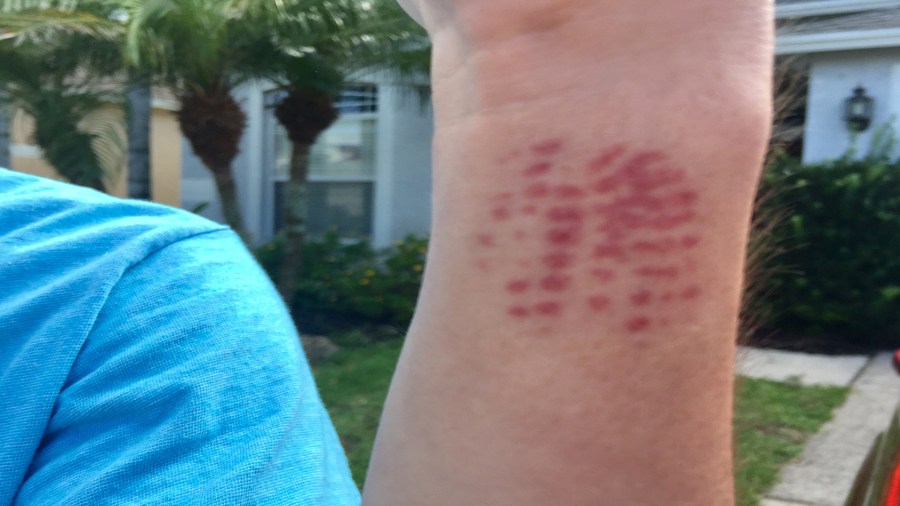TAMPA, Fla. (WFLA) — It might look soft and hairy, but experts warn to look, not touch.
Residents in Central Florida are warning others that the “Puss Caterpillars,” often described as being one of the most venomous in the country, have made their return to the area.
Measuring in around an inch long, the puss caterpillar is common in Florida during the fall and spring. The insect is commonly found on oak and elm trees and is covered in hair-like bristles with an orange streak frequently running down its back.
According to the Fish & Wildlife Foundation of Florida, the caterpillar’s attractive hairs hide “extremely toxic spines” that stick to your skin. The sting can be incredibly painful and radiate throughout the body.
In 2018, a 15-year-old was volunteering with his family in Zephyrhills when something stung him, leaving a large grid-like mark on his wrist.
“It’s burning,” he told his mom before the pain radiated to his chest.

Within minutes, the mom figured out what it was. The insect her son had come into contact with was a puss caterpillar or asp caterpillar.
While it’s best to leave them alone altogether, experts say if you do get stung, get the spines out of your skin as soon as possible using cellophane tape. Ice packs, oral antihistamine, and hydrocortisone cream can also be used to help with the pain.
The species isn’t limited to Florida. They can also be found from New Jersey to Florida and west to Arkansas and Texas.
While these interesting insects and their attractive larvae may catch your eye when exploring wild Florida, it is important to exercise caution around them.







